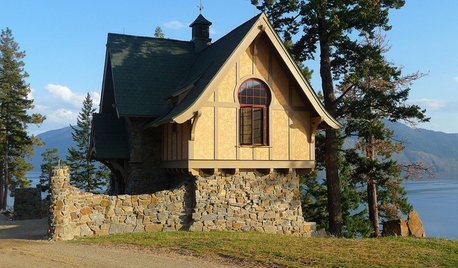Clueless new owner of rose bushes
techiestar
15 years ago
Related Stories

GARDENING GUIDESWhat Kind of Roses Should You Grow?
Want to add the beauty of roses to your garden? Find out which ones, from old-fashioned to modern, are right for you
Full Story
WINTER GARDENINGPruning Secrets for Exquisite Roses
Encourage gorgeous blooms year after year with this time-tested advice on how to prune your rosebush in winter for health and shape
Full Story
GARDENING GUIDESLearn the Secret to Bigger and Better Roses
Grow beautiful roses using both ordinary and unusual soil amendments
Full Story
LIFETrue Confessions of a House Stalker
Letting go when a new owner dares to change a beloved house's look can be downright difficult. Has this ever happened to you?
Full Story
GARDENING GUIDESLet Lilac Love Flower This Spring
Whatever you bestow or receive for Mother's Day, lilacs can be an unmatched gift in the garden in May
Full Story
KITCHEN DESIGNHouzz Call: Tell Us About Your First Kitchen
Great or godforsaken? Ragtag or refined? We want to hear about your younger self’s cooking space
Full Story
GARDENING GUIDESNew Ways to Think About All That Mulch in the Garden
Before you go making a mountain out of a mulch hill, learn the facts about what your plants and soil really want
Full Story
GARDENING GUIDESBeautiful Flowers and Foliage From Dedicated Backyard Gardeners
From lawn daisies to topiaries, Houzz users share their backyard beauties
Full Story
ARCHITECTUREHow to Design a Storybook Cottage
A client’s request: “Build me a house where Disney meets Tudor.” The architect explores the details that make the style
Full Story
LANDSCAPE DESIGN10 Ways to Create a Romantic Garden
Delve into a sensual garden design that sings of love and speaks to the senses
Full StorySponsored
Central Ohio's Trusted Home Remodeler Specializing in Kitchens & Baths
More Discussions











Kimmsr
techiestarOriginal Author
Related Professionals
Edmond Landscape Architects & Landscape Designers · Fort Lee Landscape Architects & Landscape Designers · Kapaa Landscape Architects & Landscape Designers · Manchester Landscape Contractors · Surprise Landscape Contractors · Davidson Landscape Contractors · Harvey Landscape Contractors · Hollywood Landscape Contractors · Lake Worth Landscape Contractors · Las Vegas Landscape Contractors · Live Oak Landscape Contractors · Northport Landscape Contractors · Ocoee Landscape Contractors · Forest Hill Landscape Contractors · Quartz Hill Landscape Contractorsmichaelg